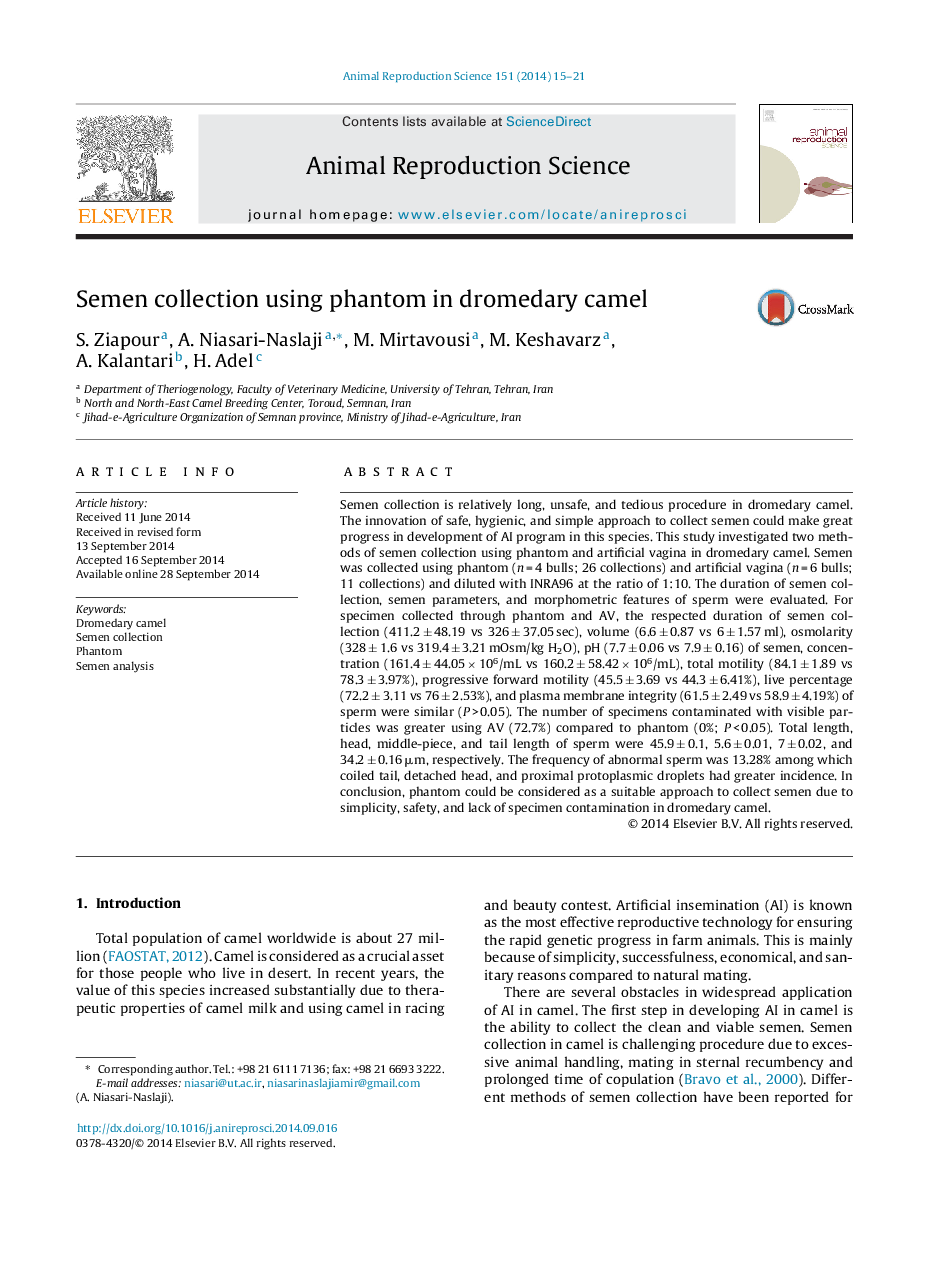| Article ID | Journal | Published Year | Pages | File Type |
|---|---|---|---|---|
| 8404490 | Animal Reproduction Science | 2014 | 7 Pages |
Abstract
Semen collection is relatively long, unsafe, and tedious procedure in dromedary camel. The innovation of safe, hygienic, and simple approach to collect semen could make great progress in development of AI program in this species. This study investigated two methods of semen collection using phantom and artificial vagina in dromedary camel. Semen was collected using phantom (n = 4 bulls; 26 collections) and artificial vagina (n = 6 bulls; 11 collections) and diluted with INRA96 at the ratio of 1:10. The duration of semen collection, semen parameters, and morphometric features of sperm were evaluated. For specimen collected through phantom and AV, the respected duration of semen collection (411.2 ± 48.19 vs 326 ± 37.05 sec), volume (6.6 ± 0.87 vs 6 ± 1.57 ml), osmolarity (328 ± 1.6 vs 319.4 ± 3.21 mOsm/kg H2O), pH (7.7 ± 0.06 vs 7.9 ± 0.16) of semen, concentration (161.4 ± 44.05 Ã 106/mL vs 160.2 ± 58.42 Ã 106/mL), total motility (84.1 ± 1.89 vs 78.3 ± 3.97%), progressive forward motility (45.5 ± 3.69 vs 44.3 ± 6.41%), live percentage (72.2 ± 3.11 vs 76 ± 2.53%), and plasma membrane integrity (61.5 ± 2.49 vs 58.9 ± 4.19%) of sperm were similar (P > 0.05). The number of specimens contaminated with visible particles was greater using AV (72.7%) compared to phantom (0%; P < 0.05). Total length, head, middle-piece, and tail length of sperm were 45.9 ± 0.1, 5.6 ± 0.01, 7 ± 0.02, and 34.2 ± 0.16 μm, respectively. The frequency of abnormal sperm was 13.28% among which coiled tail, detached head, and proximal protoplasmic droplets had greater incidence. In conclusion, phantom could be considered as a suitable approach to collect semen due to simplicity, safety, and lack of specimen contamination in dromedary camel.
Related Topics
Life Sciences
Agricultural and Biological Sciences
Animal Science and Zoology
Authors
S. Ziapour, A. Niasari-Naslaji, M. Mirtavousi, M. Keshavarz, A. Kalantari, H. Adel,
